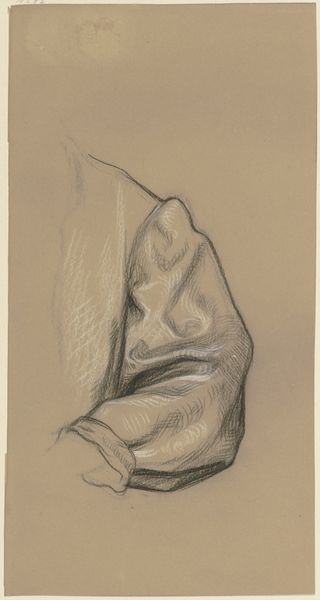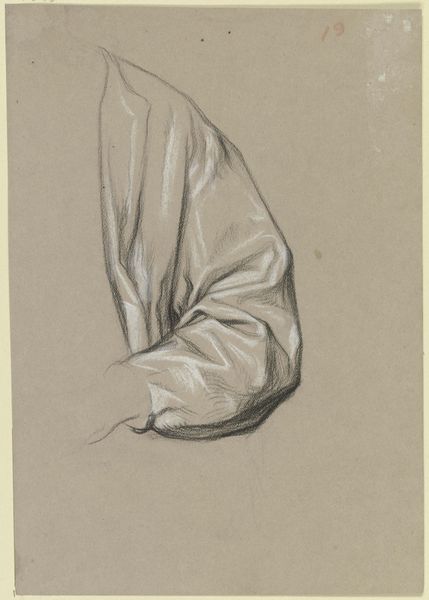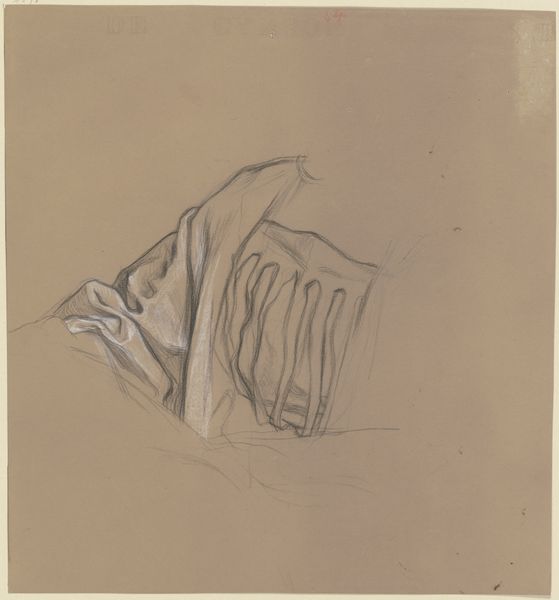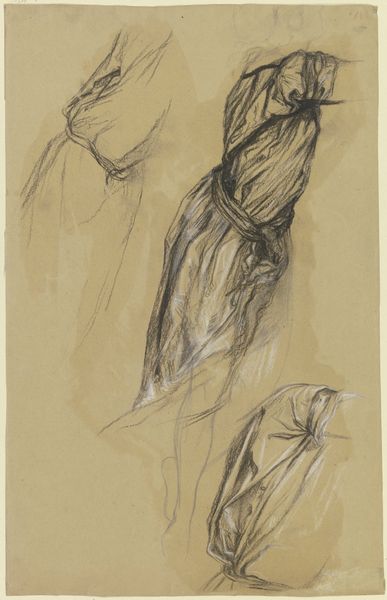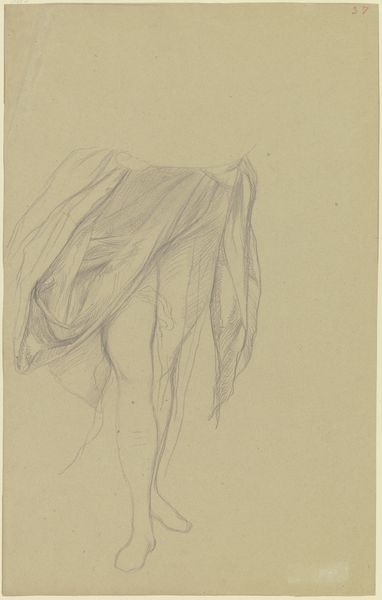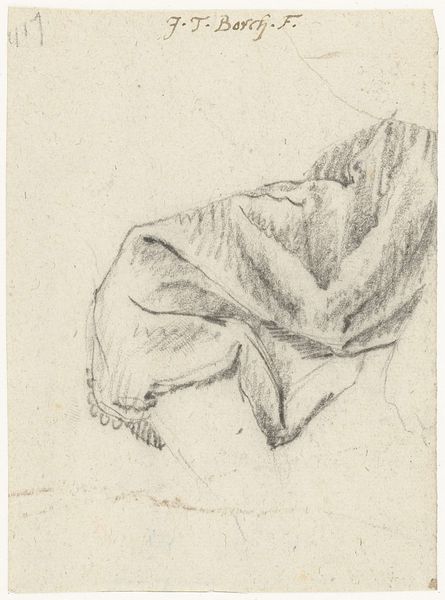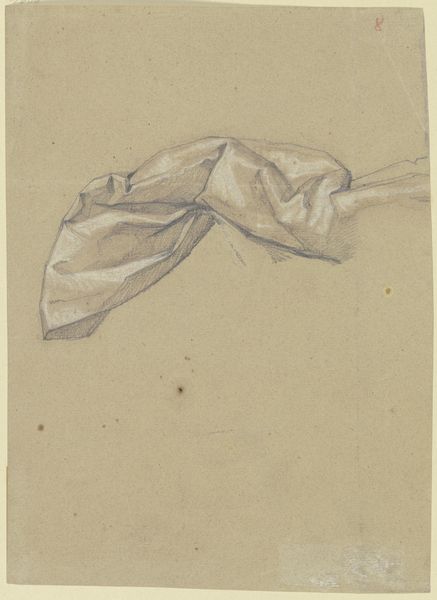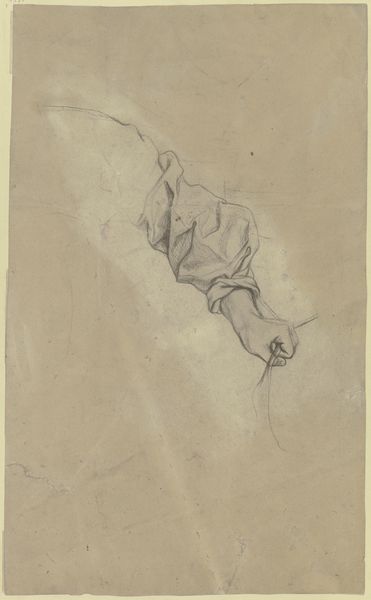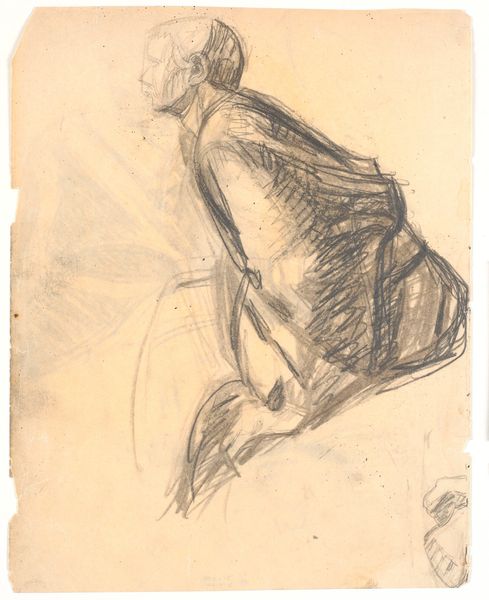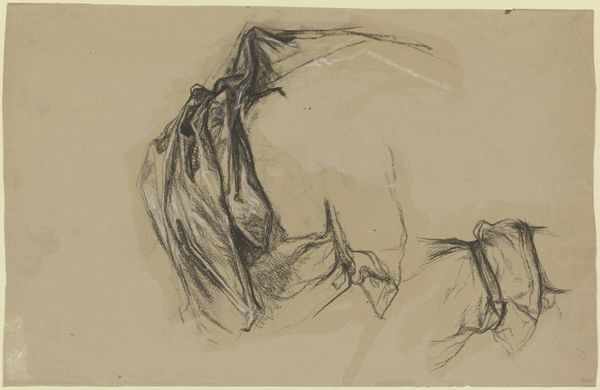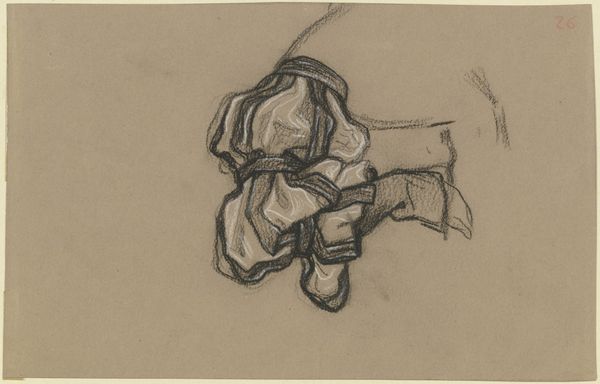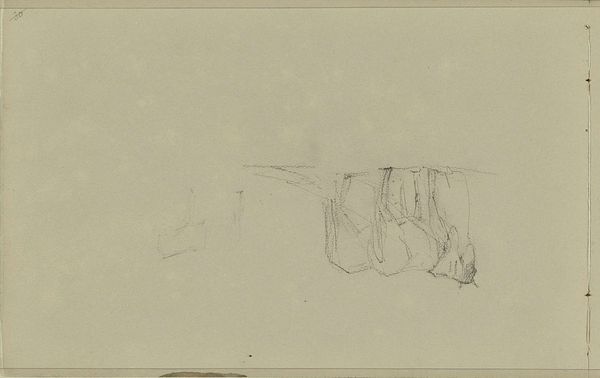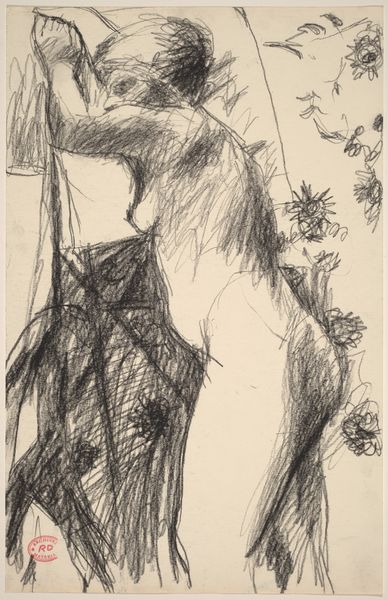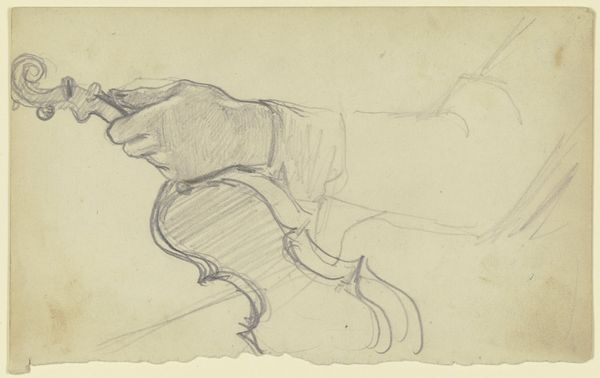
Copyright: Public Domain
Curator: Editor: Okay, next we have Victor Müller's "Die Beine der Ophelia unter einem Gewand," circa 1869, a chalk drawing. It feels like a study, very focused on drapery, almost obscuring the body beneath. What do you see in this piece? Curator: It’s fascinating how Müller uses drapery, not just to depict form, but to suggest absence and presence simultaneously. Consider Ophelia, often represented as a tragic figure defined by her madness and eventual suicide. How might this study of draped fabric – seemingly concealing her legs, hinting at vulnerability – be interpreted within the context of 19th-century representations of women? Editor: So, the very act of veiling, or concealing, becomes a statement in itself? Curator: Exactly! Think about the power dynamics at play. Who gets to look, who is looked at, and what stories are being told – or withheld – through the strategic use of drapery. Does it amplify her fragility, making her a passive object? Or could it offer a form of protection, a visual barrier against unwanted gazes? What do you think it signifies? Editor: That's a great question, the work generates more questions about seeing, hiding, and interpreting female identity, all in just a quick study. Curator: Precisely. Müller's work, ostensibly a study, inadvertently invites a deeper conversation about gender, representation, and the construction of identity. Editor: I see how much a simple piece of fabric might embody multifaceted gender meanings of the 19th century, thank you for making it more clear. Curator: It's artworks like these that push us to think critically about the role art plays in perpetuating, or challenging, societal norms.
Comments
No comments
Be the first to comment and join the conversation on the ultimate creative platform.
